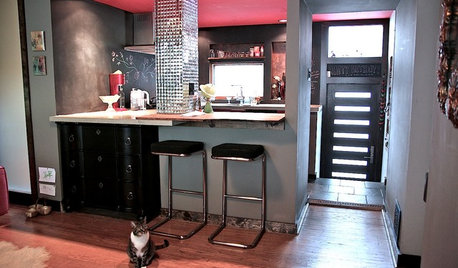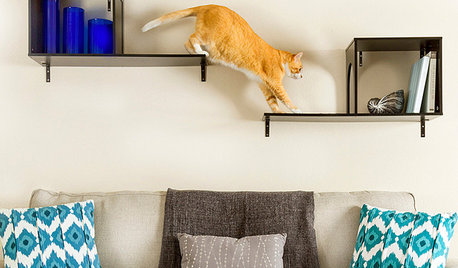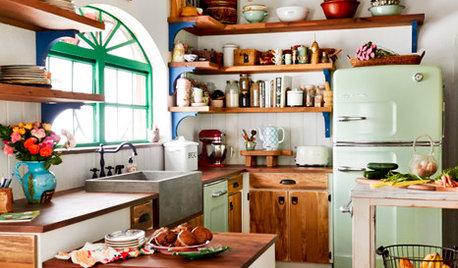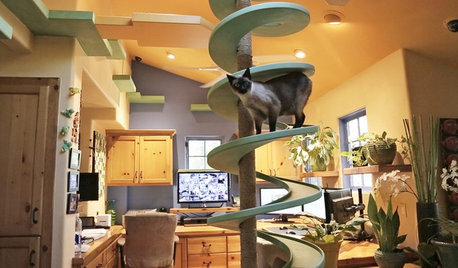cat litter for clay content?
michaelg
15 years ago
Related Stories

PETSSo You Want to Get a Cat
If you're a cat lover, the joys outweigh any other issue. If you haven't lived with one yet, here are a few things to know
Full Story
HOUZZ TOURSHouzz Tour: For the Love of a Cat in Philadelphia
Pet-friendly features integrated into a mod, eclectic and colorful home mean everyone in the family is happy
Full Story
GARDENING GUIDESGardening Solutions for Heavy Clay Soils
What’s a gardener to do with soil that’s easily compacted and has poor drainage? Find out here
Full Story
SHOP HOUZZHouzz Products: Create a Cat Heaven at Home
Show kitty you care and keep your style too with fun and cozy cat beds, perches, trees and decor
Full Story
PETSHouzz Pets Survey: Who Rules the House — Dogs or Cats?
New data shows that pets make people happy, and pet owners love spending big to return the favor
Full Story
HOUZZ TV FAVORITESHouzz TV: Animals, Love and Color on a Florida Farm
Farm-fresh style is just right for this family of 6 — and their horses, dogs, cats, chickens, zebus, birds and pig
Full Story
PETSIncredible Home Catwalks Make for Purr-fectly Happy Felines
Walkways and tunnels custom built to the tune of about $35,000 keep a homeowner’s 18 cats on cloud nine
Full Story
FEEL-GOOD HOME6 Design Ideas for Happy Pets
Keep your dog or cat feeling safe and in high spirits, and you'll all feel more at peace. Here's how
Full Story
FURNITUREHow to Choose the Right Sofa Cushion
Shopping for a sofa? Here’s what to know about the basic cushion options — and the all-important test you must do for yourself
Full Story
GARDENING GUIDESGet on a Composting Kick (Hello, Free Fertilizer!)
Quit shelling out for pricey substitutes that aren’t even as good. Here’s how to give your soil the best while lightening your trash load
Full StorySponsored
Columbus Area's Luxury Design Build Firm | 17x Best of Houzz Winner!
More Discussions







anntn6b
michaelgOriginal Author
Related Professionals
Comstock Park Landscape Architects & Landscape Designers · Foothill Ranch Landscape Architects & Landscape Designers · Hershey Landscape Architects & Landscape Designers · Rancho Palos Verdes Landscape Architects & Landscape Designers · Newcastle Landscape Architects & Landscape Designers · Gainesville Landscape Contractors · Wilmington Landscape Contractors · Burlington Landscape Contractors · Hannibal Landscape Contractors · Soddy Daisy Landscape Contractors · Tavares Landscape Contractors · West Chicago Landscape Contractors · Winchester Landscape Contractors · Maple Heights Landscape Contractors · Suisun City Landscape Contractorserasmus_gw
michaelgOriginal Author
erasmus_gw
mike_rivers
karl_bapst_rosenut
michaelgOriginal Author
henry_kuska
erasmus_gw
michael_in_chicago
erasmus_gw
karl_bapst_rosenut
thonotorose
paparoseman